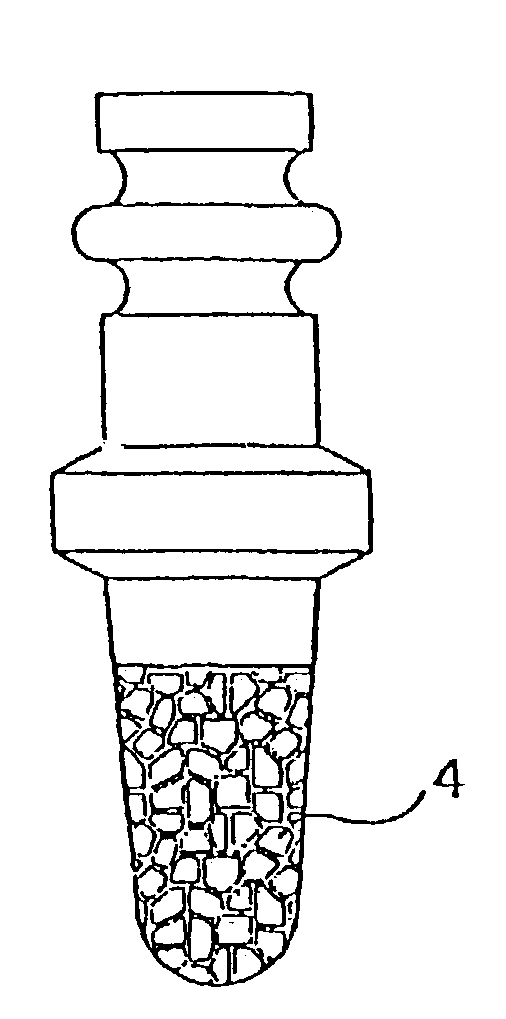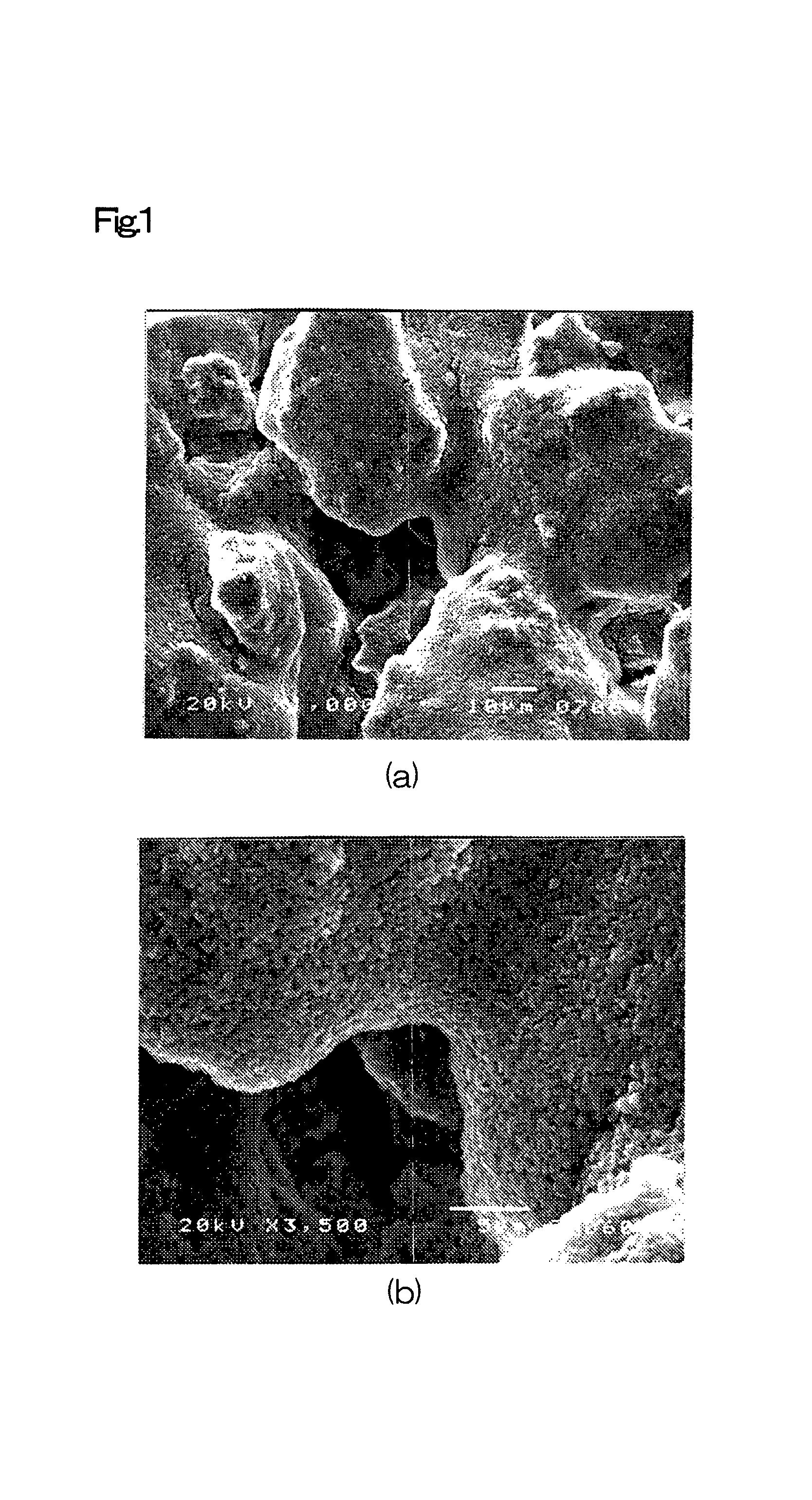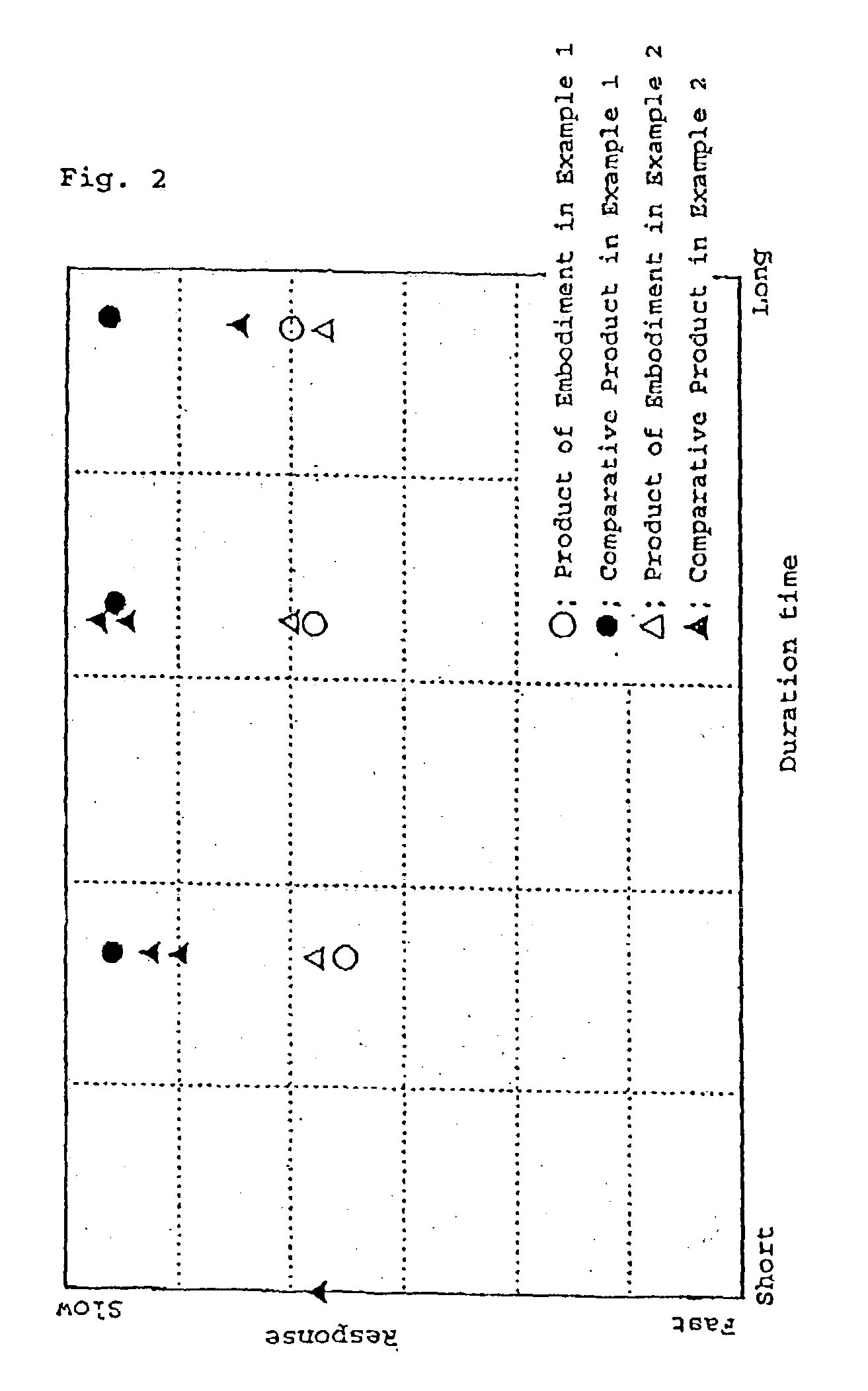Oxygen sensor and a manufacturing method of the sensor device
- Summary
- Abstract
- Description
- Claims
- Application Information
AI Technical Summary
Benefits of technology
Problems solved by technology
Method used
Image
Examples
example 1
[0045]A paste was prepared by stirring and mixing 20 g of an anatase type titania powder having a specific surface area of 10 m2 / g with a peak in the grain size distribution at 0.2 μm, 20 g of spinel powder having a specific surface area of 0.5 m2 / g with a peak in the grain size distribution at 34 μm, 28 g of water and 3 g of an alumina sol as the starting materials in a pot mill for 2 hours using nylon balls. Subsequently, a sensor device having an electrode protection layer prepared in (1) was dipped into the paste, the paste was coated by about 100 mg on the surface of the electrode protection layer and dried at 120° C. for 10 min to form a contamination preventive layer of from 150 to 250 μm thickness, to prepare a sensor device. Then, after assembling the same to a protection tube receptacle for instance, it was heated at 500° C. for 30 min to obtain an oxygen sensor.
[0046]The contamination preventive layer thus formed was smooth and cracks were not observed at all. Then, it wa...
example 2
[0047]After paste was obtained in the same manner as in Example 1 except for using 22.5 g of an anatase type titania powder having a specific surface area of 500 m2 / g with a peak in the grain size distribution at 0.007 μm, 22.5 g of a rutile type titania powder having a specific surface area of 0.7 m2 / g with a peak in the grain size distribution at 7 μm, 35 ml of methanol and 2.8 g of alumina sol as the starting materials, a sensor device having the electrode protection layer prepared in (1) was dipped into the paste, the paste was coated by about 100 mg on the surface of the electrode protection layer and dried at 120° C. for 10 min to form a contamination preventive layer of from 150 to 250 μm thickness, to prepare a sensor device. Then, after assembling the same to a protection tube receptacle for instance, it was heated at 500° C. for 30 min to obtain an oxygen sensor.
[0048]The contamination preventive layer thus formed was smooth and cracks were not observed at all. Then, it wa...
PUM
 Login to View More
Login to View More Abstract
Description
Claims
Application Information
 Login to View More
Login to View More - R&D
- Intellectual Property
- Life Sciences
- Materials
- Tech Scout
- Unparalleled Data Quality
- Higher Quality Content
- 60% Fewer Hallucinations
Browse by: Latest US Patents, China's latest patents, Technical Efficacy Thesaurus, Application Domain, Technology Topic, Popular Technical Reports.
© 2025 PatSnap. All rights reserved.Legal|Privacy policy|Modern Slavery Act Transparency Statement|Sitemap|About US| Contact US: help@patsnap.com



